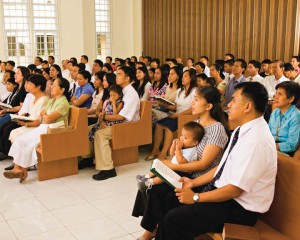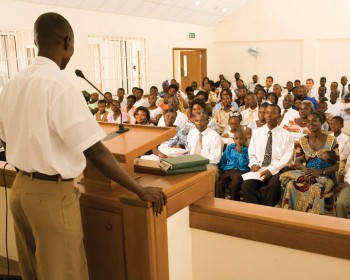The 2012 Religious Congregations and Membership Study (RCMS), released in May 2012, stated that their findings showed Mormonism to be the fastest-growing faith in 26 of the U.S. states. Islam is also growing very quickly.
The Church of Jesus Christ of Latter-day Saints, as the often misnamed “Mormon Church” is officially known, reported 2 million new adherents, as well as new congregations in 295 counties over the last ten years, since the previous study was conducted.
 Experts in both Mormonism and Islam pointed out reasons why the two religions grew so much according to the study’s set up. The RCMS counts the actual number of people affiliated with U.S. congregations who are “involved enough to the point where they know to count you” rather than going by church membership records. They feel this more accurately reflects the number of people in a congregation.
Experts in both Mormonism and Islam pointed out reasons why the two religions grew so much according to the study’s set up. The RCMS counts the actual number of people affiliated with U.S. congregations who are “involved enough to the point where they know to count you” rather than going by church membership records. They feel this more accurately reflects the number of people in a congregation.
Jan Shipps, a respected scholar of Mormonism, pointed out that the quick growth into new counties may be somewhat misleading. It is likely this growth is a result of church leaders’ decisions to split large wards (congregations) into separate, smaller wards on opposite sides of county lines. While this decision is made for logistical and leadership purposes, it could show up in the study as new congregations when it is really just the same congregation split into two new groups. Still, the study measured both new congregations and new members.
While the study showed that mosques have grown by the rate of about 50 percent in 10 years across the country, Imam Muhammad Musri, president of the Islamic Society of Central Florida saw a growth rate of 473 percent in and around Orlando’s Orange County. He is of the opinion that the real growth is even higher than the 10,000 new Muslims reported in the study. However, he and researchers both think this rate will not continue. Researchers say there are several possible explanations for such huge growth including suburb growth, an increased willingness to be recognized as a Muslim, and more mosques being built in rural areas to serve more worshippers, who are then far more likely to be counted in the study. Musri has seen a wave of post-9/11 converts and also recognized that many American-born children of immigrants are also having children. Many Muslims have moved to his area for economic reasons.
Musri said, “I doubt in the next decade we will grow as much. It’s like a new product when it’s first introduced, there’s lots of interest. But now we’re more of a known quantity and we’re not going to be opening as many new mosques as we were in the last decade.”
Because the study tracks membership by those who attend, not those who just profess to believe, researchers have been able to track the difference in those who say they are religiously affiliated compared to those who actively participate in religion. While 80 percent of Americans claim to be Christians, the study showed only about 49 percent are actually affiliated with a local congregation.
Dale Jones, a researcher with the Church of the Nazarene who worked on the study as part of the Association of Statisticians of American Religious Bodies, saw this as partly the responsibility of the churches themselves putting more of an emphasis on having a personal relationship with Christ than needing to be involved in a congregation.
The RCMS fails to track people who do not belong to a congregation, so this also does not reflect the growing body of religiously unaffiliated Americans, but it did track the growth of nondenominational and independent evangelical churches, which combine to form the nation’s third-largest group of Christians.
Catholicism continues to represent the largest religious body in the United States, but it is clear that no matter how you cut it, Mormonism is appealing to a large group of people and is no longer a Utah-focused religion. It is growing across the world as well as across the United States. Mormon doctrine appeals to a large group of people for its emphasis on following the example of Jesus Christ in your daily life as well as for its emphasis on family values.
By Doris
About Keith L. Brown
Keith L. Brown is a convert to The Church of Jesus Christ of Latter-day Saints, having been born and raised Baptist. He was studying to be a Baptist minister at the time of his conversion to the LDS faith. He was baptized on 10 March 1998 in Reykjavik, Iceland while serving on active duty in the United States Navy in Keflavic, Iceland. He currently serves as the First Assistant to the High Priest Group for the Annapolis, Maryland Ward. He is a 30-year honorably retired United States Navy Veteran.


